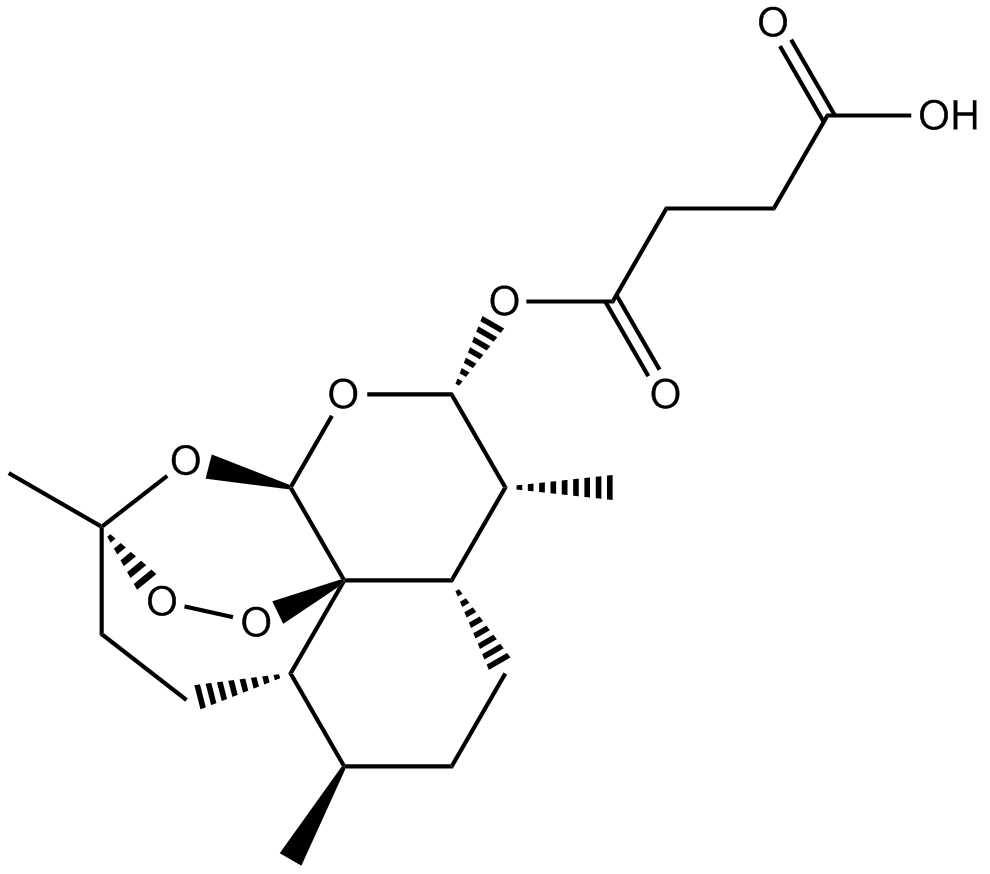Artesunate (Synonyms: Artesunic Acid, NSC 712571, WR 256283) |
| Catalog No.GC10889 |
Derivative of the natural product artemisinin
Products are for research use only. Not for human use. We do not sell to patients.

Cas No.: 88495-63-0
Sample solution is provided at 25 µL, 10mM.
Artesunate is an inhibitor of both STAT-3 and exported protein 1 (EXP1).
Artesunate is an inhibitor of both STAT-3[1] and exported protein 1 (EXP1)[2]. Artesunate treatment for 24 h causes a significant increase in the levels of reactive oxygen species (ROS) in a dose-dependent manner in both cell lines. Moreover, Western blotting shows that the levels ofγ-H2AX are significantly elevated when cancer cells are treated with Artesunate in the higher dose range for 24 h. Artesunate also shows a time-dependent effect on the level of RAD51 in A2780 and HO8910 cells. In two types of non-malignant cells, normal human fibroblasts and immortalized epithelial cells, FTE-187, the level of RAD51 is not altered by Artesunate. In A2780 cells, the level of RAD51 mRNA is indeed decreased by the addition of Artesunate, in a dose-dependent manner. Correspondingly, the promoter activity of RAD51 is significantly inhibited by Artesunate. In contrast, the RAD51 mRNA level in H8910 cells is not affected by Artesunate[3].
Tumor growth is significantly reduced in the group receiving combined treatment of Artesunate and cisplatin (P<0.01). In comparison, Artesunate alone has no significant effect on the growth of tumor xenografts for both cell lines[3].
Reference:
[1]. Ilamathi M, et al. Artesunate as an Anti-Cancer Agent Targets Stat-3 and Favorably Suppresses Hepatocellular Carcinoma. Curr Top Med Chem. 2016;16(22):2453-63.
[2]. Lisewski AM, et al. Supergenomic network compression and the discovery of EXP1 as a glutathione transferase inhibited by artesunate. Cell. 2014 Aug 14;158(4):916-928.
[3]. Wang B, et al. Artesunate sensitizes ovarian cancer cells to cisplatin by downregulating RAD51. Cancer Biol Ther. 2015;16(10):1548-56.
Average Rating: 5 (Based on Reviews and 34 reference(s) in Google Scholar.)
GLPBIO products are for RESEARCH USE ONLY. Please make sure your review or question is research based.
Required fields are marked with *




















